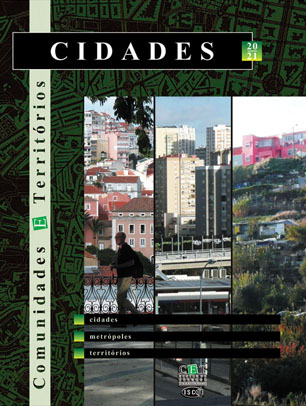Espaço Público e Criatividade Urbana: A dinâmica dos lugares em três bairros culturais
DOI:
https://doi.org/10.7749/citiescommunitiesterritories20-2121Palabras clave:
espaço público, criatividade, cidades criativas, bairros culturais, actividades económicas, vitalidade urbana, competitividade urbana, Bairro Alto, Vila Gracia, Vila MadalenaResumen
A desterritorialização da esfera pública e as formações sociais emergentes nos "espaços públicos" virtuais da sociedade em rede têm vindo a concorrer para uma acentuada erosão da vida colectiva nos espaços públicos e lugares urbanos tradicionais. No entanto, a par desta nova cidade dos fluxos, determinadas áreas urbanas centrais distinguem-se enquanto espaços de referência para a cidade dos lugares. Este estudo- que pretende contribuir para a discussão da Cidade Criativa- analiza comparativamente as dinâmicas de três destes lugares urbanos, informalmente reconhecidos enquanto "bairros criativos", ou "bairros culturais": Bairro Alto em Lisboa; Vila Gracia em Barcelona; e Vila Madalena em São Paulo. Na primeira parte do artigo expõem-se os pressupostos teóricos do estudo: uma abordagem ao tema da criatividade urbana a partir do binómio espaço público/esfera pública; o reconhecimento da importância de determinadas actividades económicas para a vitalidade dos espaços públicos; e a hipótese que a morfologia do espaço público - determinante da forma como as pessoas dele se apropriam- associada a uma grande concentração de espaços privados de uso público, contribui decisivamente para a criatividade e competitividade dos territórios urbanos. A segunda parte do artigo descreve os três estudos de caso, em que se analisam comparativamente as dinâmicas dos espaços públicos e dos espaços privados de uso público dos três bairros em termos da sua funcionalidade, acessibilidade, e morfologia; bem como a percepção de diversos agentes-chave locais das relações entre estes factores urbanísticos e a criatividade, vitalidade, e competitividade de cada bairro. Esta análise permite identificar algumas das condições e oportunidades dos territórios urbanos tradicionais para atrair e fixar actores e actividades criativas. Por outro lado, permite igualmente examinar criticamente a possibilidade de desenvolvimento de novas áreas urbanas competitivas mas socialmente e culturalmente responsáveis.
Descargas
Publicado
Número
Sección
Licencia
CIDADES, Comunidades e Territórios by DINÂMIA'CET-Iscte is licensed under a CC-BY licence.






